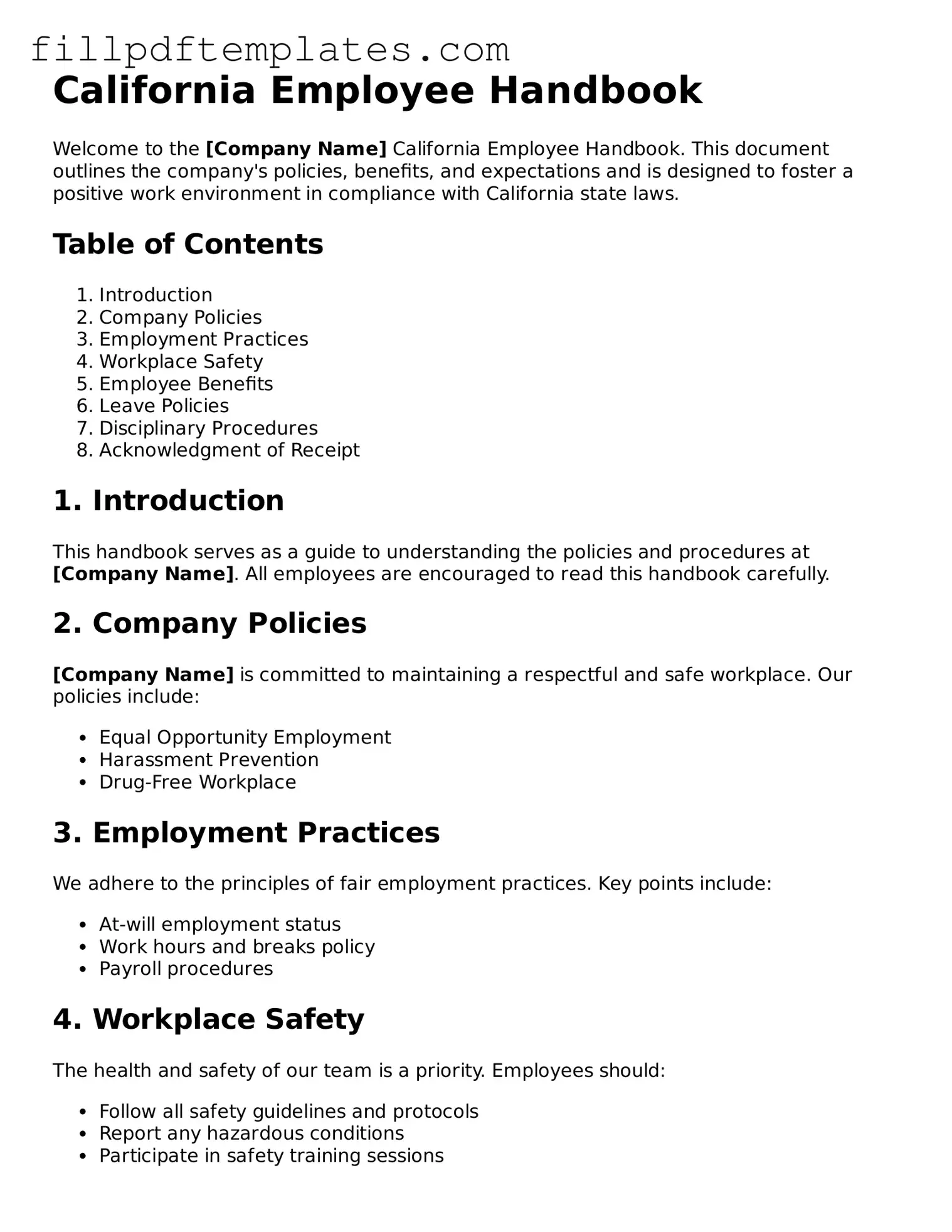California Employee Handbook
Welcome to the [Company Name] California Employee Handbook. This document outlines the company's policies, benefits, and expectations and is designed to foster a positive work environment in compliance with California state laws.
Table of Contents
- Introduction
- Company Policies
- Employment Practices
- Workplace Safety
- Employee Benefits
- Leave Policies
- Disciplinary Procedures
- Acknowledgment of Receipt
1. Introduction
This handbook serves as a guide to understanding the policies and procedures at [Company Name]. All employees are encouraged to read this handbook carefully.
2. Company Policies
[Company Name] is committed to maintaining a respectful and safe workplace. Our policies include:
- Equal Opportunity Employment
- Harassment Prevention
- Drug-Free Workplace
3. Employment Practices
We adhere to the principles of fair employment practices. Key points include:
- At-will employment status
- Work hours and breaks policy
- Payroll procedures
4. Workplace Safety
The health and safety of our team is a priority. Employees should:
- Follow all safety guidelines and protocols
- Report any hazardous conditions
- Participate in safety training sessions
5. Employee Benefits
Employees are eligible for various benefits, including:
- Health insurance
- Retirement plans
- Paid time off
6. Leave Policies
Various leave options are available, such as:
- Family and Medical Leave (FMLA)
- California Paid Sick Leave
- Parental leave
7. Disciplinary Procedures
In case of policy violations, the following steps may be taken:
- Verbal warning
- Written warning
- Termination of employment
8. Acknowledgment of Receipt
All employees must sign to acknowledge receipt and understanding of this handbook. Please fill out the following:
Employee Name: [Employee Name]
Date: [Date]
Signature: ___________________________
This handbook is subject to change. It is advisable for employees to stay informed about any updates to policies or procedures.
